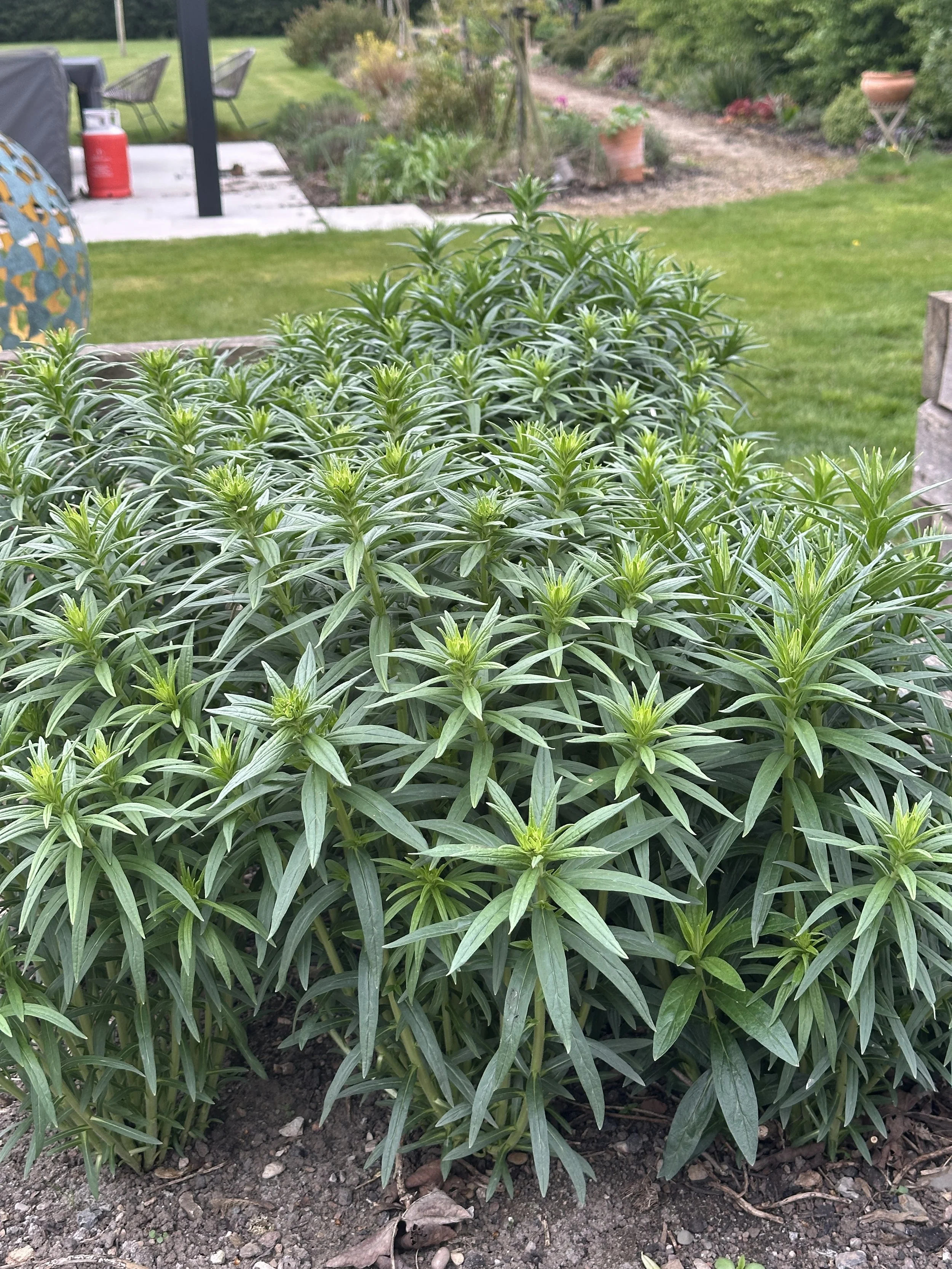Growing and Dyeing with Murasaki / Gromwell

After searching for many years for Alkanet seeds and plants, and having Zero luck, I found a source of Murasaki seeds as they have similar colours and dye properties to Alkanet.
2024 seeds were sown, the seeds are like tiny pearls, with a hard shell, so I soaked them a little in warm water to get them going before I sowed them, this worked well and in a week they had germinated. This is a traditional Japanese dye, but this is not allowed to be harvested from the wild any more, so growing your own is recommended, I don’t believe this is found natively in the UK.
My plants are grown in a semi shady spot, as this is meant to enhance the dye components in the roots. The first year they were quite straggly plants, and looked very much like madder. They did flower and I collected the seed just incase. Just like madder the roots are meant to be harvested around year 3, but because I’m impatient and the plants were numerous, I did dig a little up. and the roots looked like this:
Murasaki roots around 6 months old.
I did have a go at dyeing with these, but more of that later. In the winter the plants dyed right back to nothing, I left the plant material on top for a while to give them some insulation, and then in March 2024 shoots appeared and these really did seem to be some very robust plants:
Each Murasaki plant seems very thick and it’s easy to imagine that the root growth underneath has dramatically increased.
Murasaki plants at one year old coming into their second year.
In contrast to last year the plants are really very attractive, they have a lovely bush form, and the flowers on top look like they are about to come out. I will collect seed again. This is year 2, so I will sow some so I have a succession of plants each year to harvest, similar to Madder.
Dyeing with Murasaki
I’ve learned my lesson well enough now to try dyeing with practice material rather than using precious home grown material for the first time, and in this case, it was worth practicing first.
I managed to get some roots from Japan to dye with, I soaked the dried roots in water, left it and then popped some 3g embroidery skeins from Chester Wool Company ( a Bluefaced Leicester and silk blend) which had been mordanted with Alum at 15%. And cooked them, the result was awful, the colour came out as a sludgy brown. I also used my own fresh roots and had the same result, I wasn’t particularly trying very hard, but it’s a good test to start with.
Since Alkinet is often better soaked in Alcohol as the dye molecules aren’t very soluble in water, I decided to try this instead. I purchased some Isopropyl Alcohol and soaked the dyed chopped root overnight in a jam jar, and then the next morning strained off the alcohol that was now bright red and added some warm water. I popped this in a jam Jar and added two 3g embroidery skeins, one pure silk and the other bfl/silk blend, and put the jar in my Bain Marie and controlled the temps so it was a lot lower, around 60C. I left the skeins in for around an hour and I finally got purple! I believe shifting the pH with Soda ash increases the Blue tones, so I will try that next time, but for now I feel much more confident when it comes to using my own roots. The colour is not meant to be very colourfast, so I will do a little test to see how colourfast it actually is, but I’m not particularly worried, its a gorgeous colour and its super fun to grow and use this dye plant.
Top skein is a 55% Bluefaced Leicester 45% Silk blend, bottom skein is Pure Silk Skein



